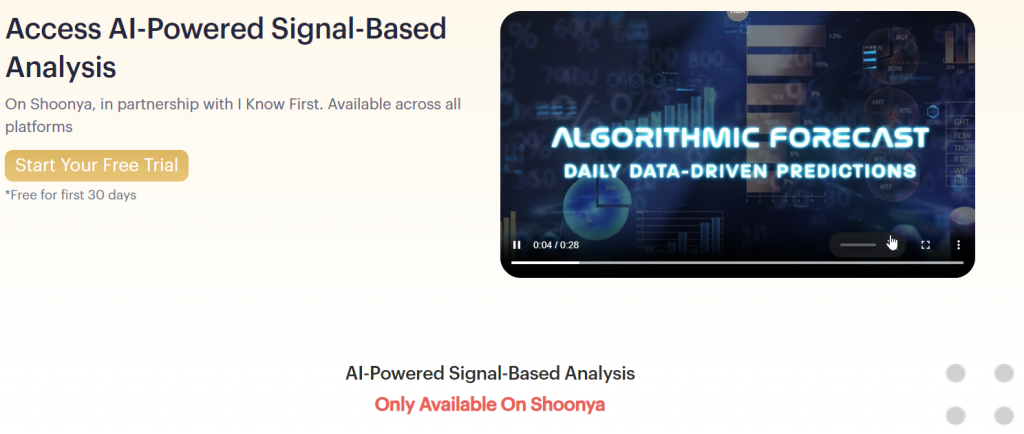20 Pro Reasons For Choosing Ai For Trading
Wiki Article
Top 10 Suggestions For Using Sentiment Analysis In Ai Trading From Penny Shares To copyright
Leveraging the use of sentiment analysis in AI stock trading is a powerful way to gain insights into the market's behavior, particularly for cryptocurrencies and penny stocks where sentiment plays a significant role. Here are 10 top suggestions to effectively use sentiment in these markets.
1. Sentiment Analysis What exactly is it and why is it important?
Tips - Be aware of the impact of the mood on prices in the short term, especially in speculative market like penny stocks or copyright.
Why: The public's sentiment is usually a key indicator of price movements which is a great signal to trade.
2. AI-powered analysis of various sources of data
Tip: Incorporate diverse data sources, including:
News headlines
Social media (Twitter Reddit Telegram, etc.
Forums and blogs
Earnings calls, press releases and earnings announcements
Why: Broad coverage helps to create a more complete emotional image.
3. Monitor Social Media in Real Time
Tips: To monitor the most popular discussions, you can use AI tools like Sentiment.io (StockTwits), LunarCrush (Sentiment.io) or StockTwits.
For copyright Concentrate on influential people.
For Penny Stocks: Monitor niche forums like r/pennystocks.
The reason: Real-time tracking allows you to capitalize on emerging trends.
4. Focus on Sentiment Analysis
Attention: pay attention to metrics such as:
Sentiment Score: Aggregates positive vs. negative mentions.
It tracks the buzz or excitement around an asset.
Emotion Analysis identifies excitement or fear, or even anxiety.
Why: These metrics can offer insight into the psychology of markets.
5. Detect Market Turning Points
Tip: Use sentiment analysis to identify extremes (market peaking) or negative (market bottoms).
Strategies that do not work in extreme circumstances.
6. Combining Sentiment with Technical Indicators
TIP: Mix sentiment analysis with traditional indicators such as RSI, MACD, or Bollinger Bands to verify.
The reason: Sentiment isn't enough to give context; an analysis of the technical aspects can be useful.
7. Integration of Sentiment Data Automatically
Tip: AI bots can be used to trade stocks and integrate sentiment scores into algorithms.
Automated response ensures rapid reaction to market sentiment changes.
8. Account for Sentiment Manipulation
Attention: Fake news and Pump-and-Dump schemes are particularly dangerous in penny stock and copyright.
How to use AI software to spot anomalies.
How? Identifying the source of manipulation helps protect you from false signals.
9. Backtest Sentiment-Based Strategies
Test the impact of past market conditions on trading driven by sentiment.
Why: You can use sentiment analysis to enhance the strategies you employ to trade.
10. Monitor the mood of influentials
Tip: Make use of AI for monitoring market influencers, such as prominent traders, analysts and copyright developers.
Focus on the tweets and posts of people such as Elon Musk or other prominent blockchain founders.
For Penny Stocks: Watch commentary from experts in the field or activists.
What is the reason: The opinions of influential people can have a profound impact on the market's sentiment.
Bonus: Mix Sentiment with Fundamental and On-Chain Data
Tip : For penny stocks Mix emotions with the fundamentals like earnings reports and for copyright, incorporate on-chain (such as movements of wallets) data.
Why: Combining different kinds of data provides a more holistic view, and less reliance is placed on sentiment.
These tips will allow you to apply sentiment analysis to your AI-based trading strategies both for penny stocks and copyright. Follow the best https://www.inciteai.com/ for website examples including artificial intelligence stocks, ai trading bot, incite ai, investment ai, ai investing app, ai stock trading, ai for stock trading, ai trading, ai in stock market, ai stock trading and more.

Top 10 Tips On Understanding Ai Algorithms: Stock Pickers, Investments And Predictions
Understanding the AI algorithms that power the stock pickers can help you assess their effectiveness and ensure they align with your investment goals. This is true whether you are trading penny stocks, copyright, or traditional equity. The 10 suggestions below can help you understand the way AI algorithms work to predict and invest in stocks.
1. Machine Learning Basics
Learn about machine learning (ML) which is widely used to forecast stocks.
Why: Most AI stock pickers rely on these methods to study historical data and make precise predictions. This can help you better know how AI is working.
2. Get familiar with common algorithms used for stock picking
Look up the most commonly used machine learning algorithms used in stock selection.
Linear Regression (Linear Regression) is a method of predicting price trends by using historical data.
Random Forest: Using multiple decision trees for greater predictive accuracy.
Support Vector Machines SVM The classification of shares into "buy", "sell" or "neutral" according to their specific characteristics.
Neural Networks (Networks): Using deep-learning models for detecting complex patterns from market data.
Why: Knowing which algorithms are used will assist you in understanding the different types of predictions made by the AI.
3. Investigation of Feature Design and Engineering
Tip: Check out the way in which the AI platform selects (and processes) features (data to predict) like technical indicators (e.g. RSI, MACD), financial ratios, or market sentiment.
Why: The AI performance is heavily affected by the quality of features and their importance. Features engineering determines whether the algorithm is able to recognize patterns that result in profitable predictions.
4. Look for Sentiment analysis capabilities
Tips - Find out if the AI employs sentiment analysis or natural language processing to analyze non-structured data sources like social media, news articles and tweets.
What is the reason? Sentiment analysis aids AI stock analysts gauge market sentiment, especially in highly volatile markets such as penny stocks and cryptocurrencies, where news and sentiment shifts can profoundly impact the price.
5. Understanding the role of backtesting
Tip: Ensure the AI model uses extensive backtesting with historical data to refine its predictions.
Why? Backtesting helps discover how AIs performed in the past under different market conditions. It offers insight into an algorithm's robustness, reliability and ability to deal with different market situations.
6. Examine the Risk Management Algorithms
Tip - Understand the AI risk management features included, including stop losses, position sizes and drawdowns.
Why: Effective risk management can avoid major losses. This is especially important in markets with high volatility, for example penny stocks and copyright. The best trading strategies need algorithms to reduce the risk.
7. Investigate Model Interpretability
Tips: Search for AI that offers transparency on how predictions are created.
The reason is that interpretable AI models can help you understand how a stock is selected, and which factors have influenced this decision. They also increase your confidence in AI's recommendations.
8. Examine the Use and Reinforcement of Learning
Tips - Get familiar with the idea of reinforcement learning (RL) It is a subset of machine learning. The algorithm adjusts its strategies to rewards and punishments, learning through trial and errors.
Why: RL is commonly used to manage market that are constantly changing, such as copyright. It is capable of adapting and optimizing trading strategies based on feedback, improving long-term profitability.
9. Consider Ensemble Learning Approaches
Tip: Check to see if AI utilizes the concept of ensemble learning. This is when multiple models (e.g. decision trees and neuronal networks, etc.)) are employed to make predictions.
Why do ensembles enhance prediction accuracy due to the combination of advantages of multiple algorithms. This improves the reliability and reduces the chance of making mistakes.
10. Take a look at Real-Time Data vs. Historical Data Usage
Tip: Know whether the AI models rely more on historical or real-time data to make predictions. A lot of AI stockpickers use both.
Why: Realtime data is essential for trading strategies that are active in volatile markets, like copyright. However, historical data can be used to predict long-term patterns and price movements. It is ideal to have an equal amount of both.
Bonus: Be aware of Algorithmic Bias & Overfitting
Tips: Be aware of biases, overfitting and other issues in AI models. This occurs when the model is very closely matched to historical data and fails to generalize to current market conditions.
What's the reason? Bias and overfitting can distort the AI's predictions, which can lead to poor performance when applied to real market data. To ensure long-term success it is essential to ensure that the model is standardized and generalized.
Knowing the AI algorithms that are used to pick stocks will help you evaluate the strengths and weaknesses of these algorithms as well as potential suitability for certain trading styles, whether they're focused on penny stock or cryptocurrencies, as well as other assets. You can also make educated decisions by using this knowledge to decide the AI platform will work best to implement your investment strategies. Read the most popular copyright ai bot for blog examples including ai for trading, trading bots for stocks, ai for trading stocks, ai investing, coincheckup, trading chart ai, ai stocks, ai copyright trading bot, ai sports betting, stocks ai and more.
